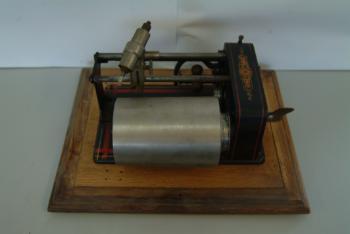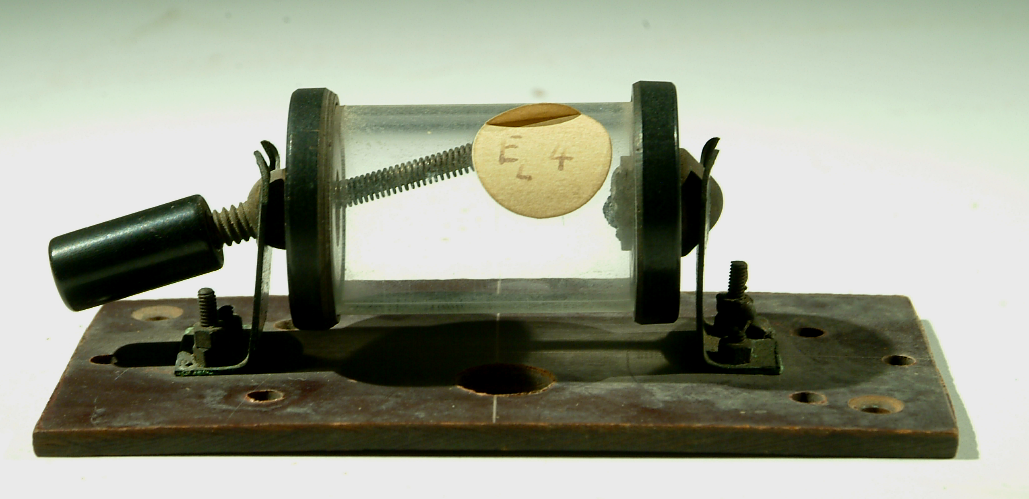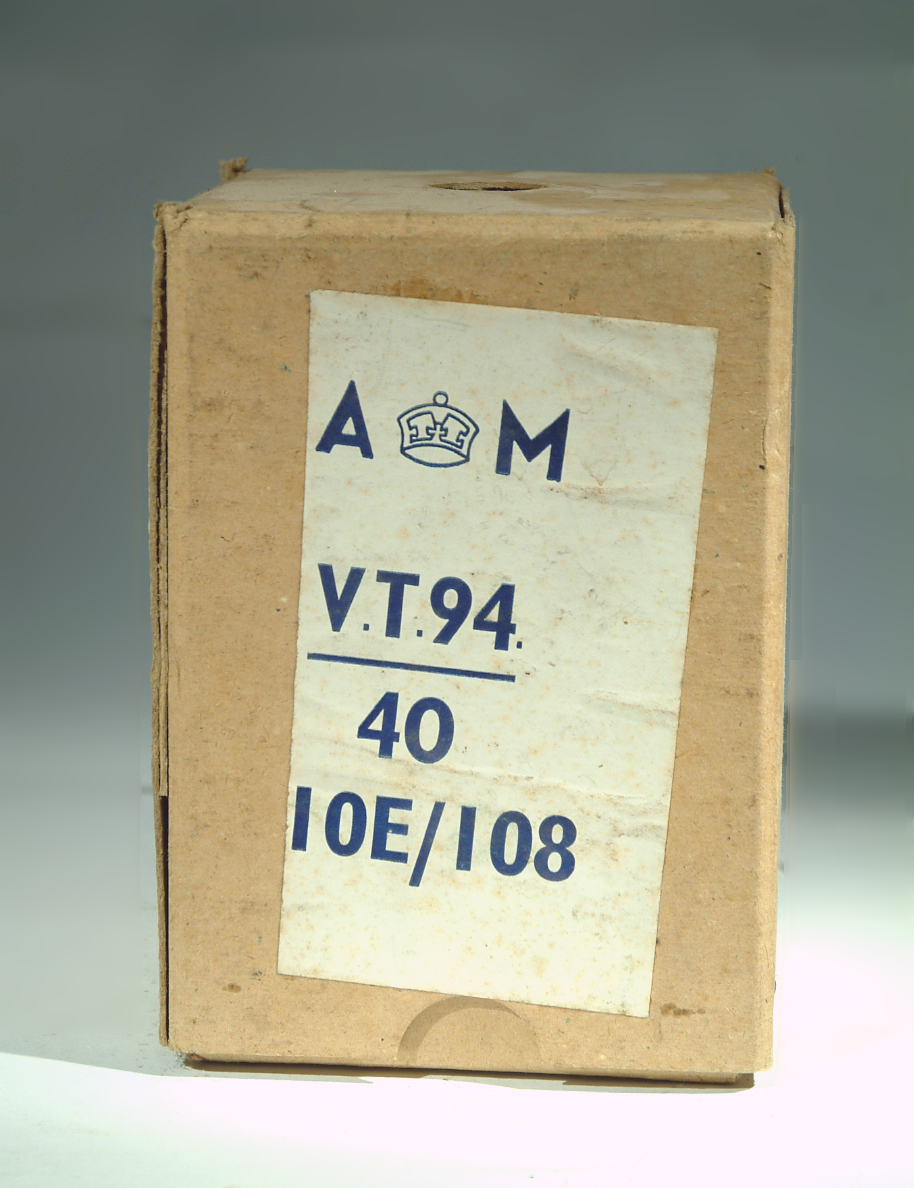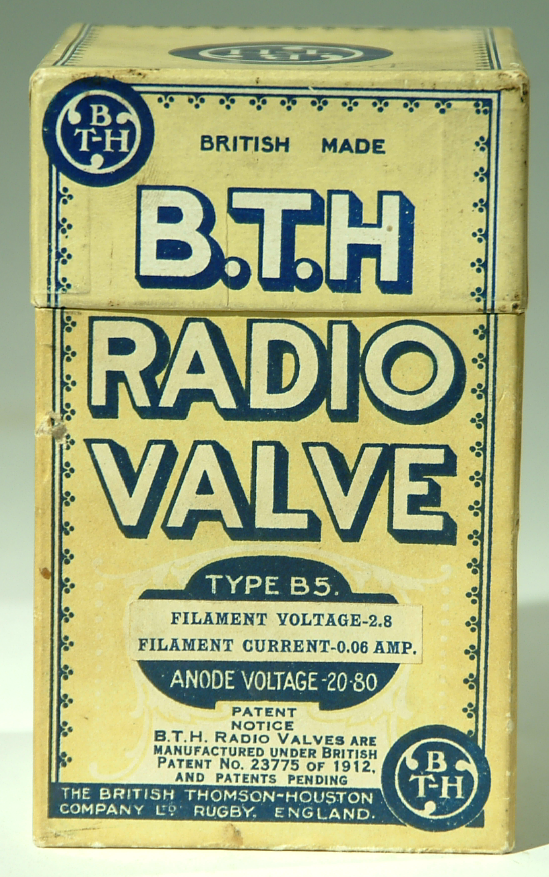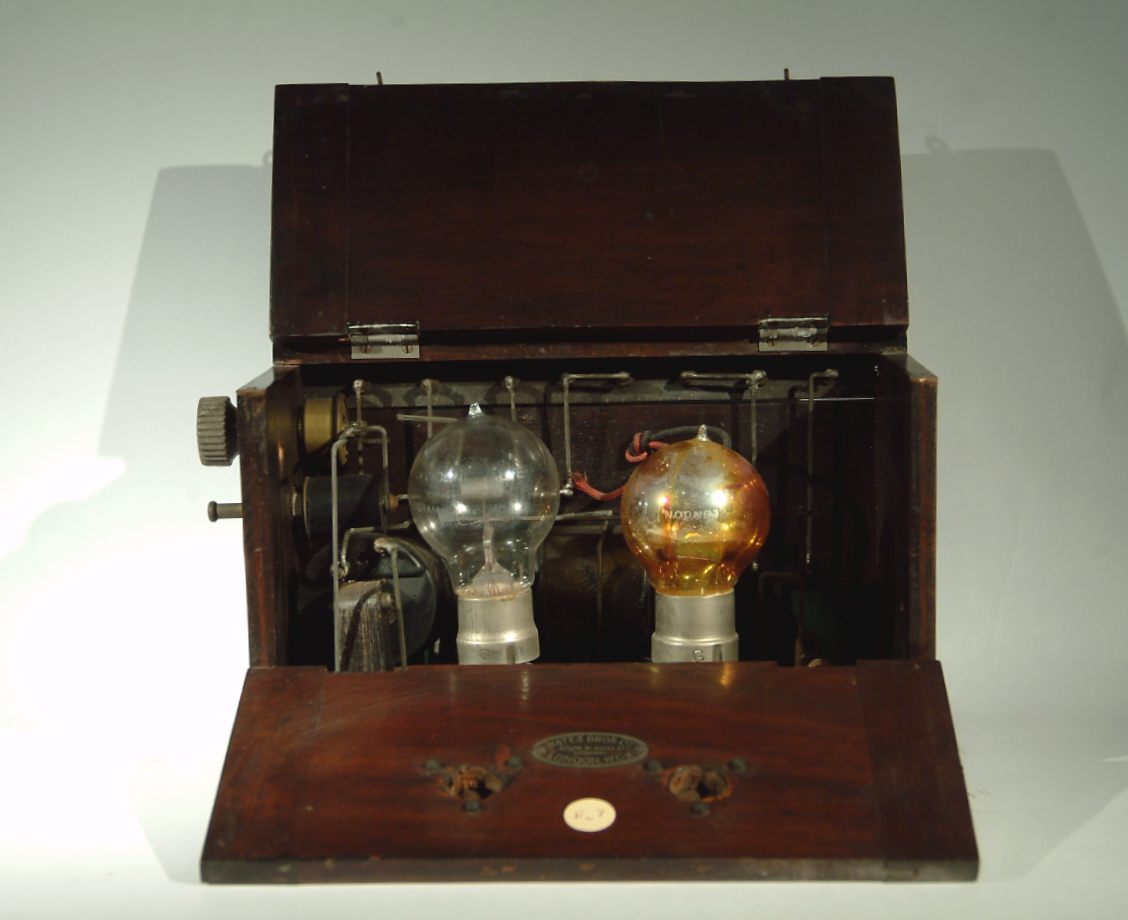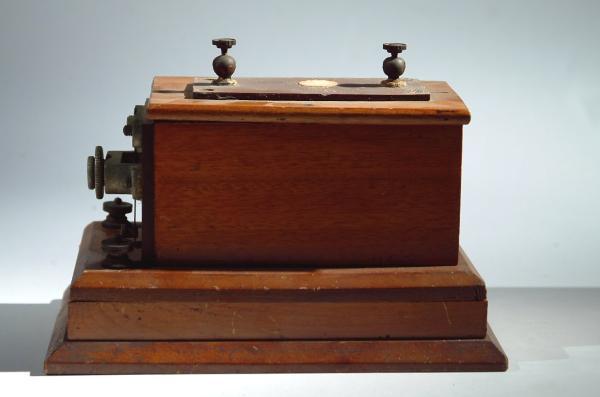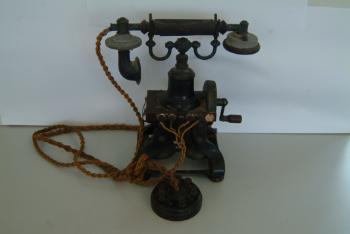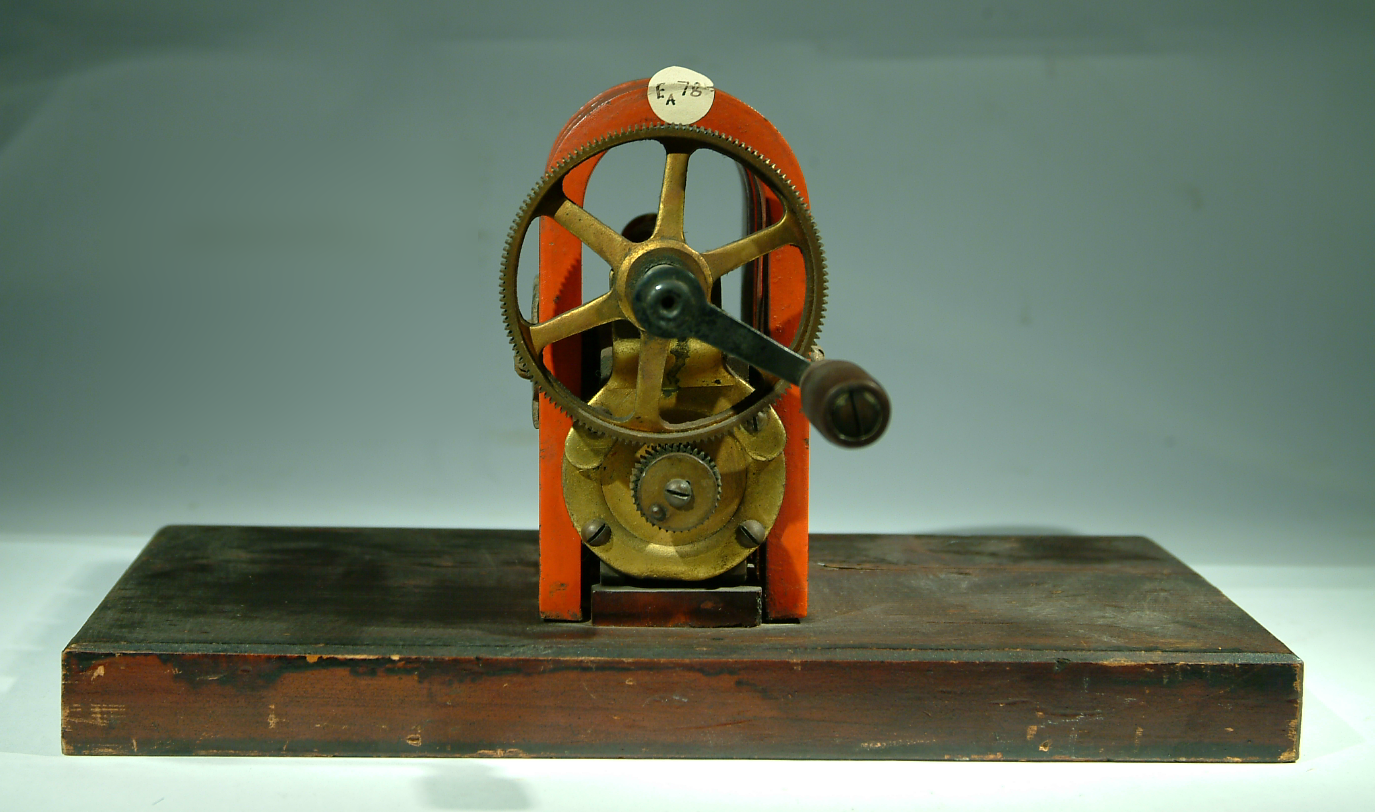Acoustics and Communications Collection
Welcome to the acoustics and communications collection at Aberystwyth University Physics Museum. This collection of artefacts dates back to the early 20th century with an assortment of First World War era telegraphs and wireless radio receivers.
This collection is split into three sections:
AUDIO
2 Air Music Box
By A. W. Gamage, Ltd. London. 1920 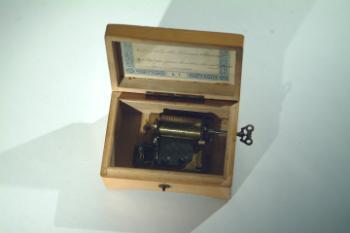
Made in Switzerland, this music box plays two songs and is in a wooden case with an image of 4 cats painted on the lid.
Test Records
By The Gramophone Company Ltd, London. 1937


This book of 5 records was used to demonstrate the properties of sound. There are 4 constant frequency records and one demonstration record. Album No. 252.
Dove’s Acoustic Siren
By Tisley and Spiller. London. 1870
This siren uses a bellows to pass air through holes in two disks, producing sound and causing the disks to rotate. The dials recorded the number of times the disks rotated, allowing the user to determine the frequency of the note produced.
Sound Sensitive Flame
Circa 1900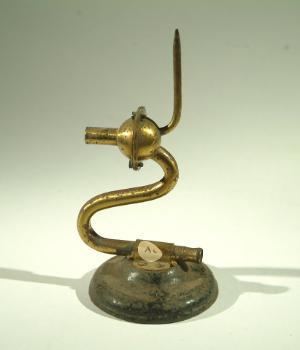
This gas flame resonated with certain frequencies of sound to produce a very high pitched note. This piece was used alongside a rotating-mirror oscilloscope.
Schaefer Continuous Resonance Apparatus
By Zimmerman, Leipzig. 1900
Four of these resonators are complete in case and cover a wide range of musical notes.
Tuning Fork On Resonance Box

Striking the fork causes the soundwaves to resonate inside the open cavity for a long, sustained note.
PHONOGRAPHS
Edison GEM Model B Phonograph
By Thomas A. Edison, 1905

A device for the recording and playing of records. Sound waveforms are either etched, engraved, impressed or incised onto the surface of a wax cylinder to record sound. To play the record, the cylinder is rotated as a stylus traces the waveform and reproduces the sound. This phonograph played 2-minute cylinders.
Wax Cylinder for Ediphone
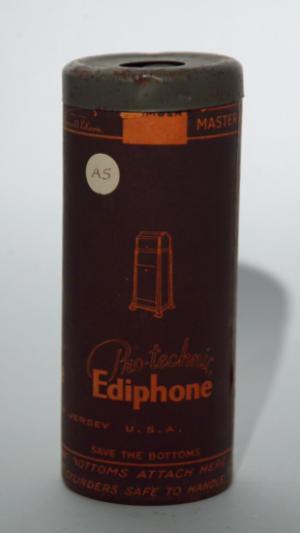
By Thomas A. Edison, 1925
A wax cylinder for use on a phonograph system for the playing or recording of sound.
Phonograph
By EWC. 1905
This phonograph plays 3” cylinders but the reproducer is missing.
From B. Davies collection.
Edison Standard Model C Phonograph
By Thomas A. Edison. 1907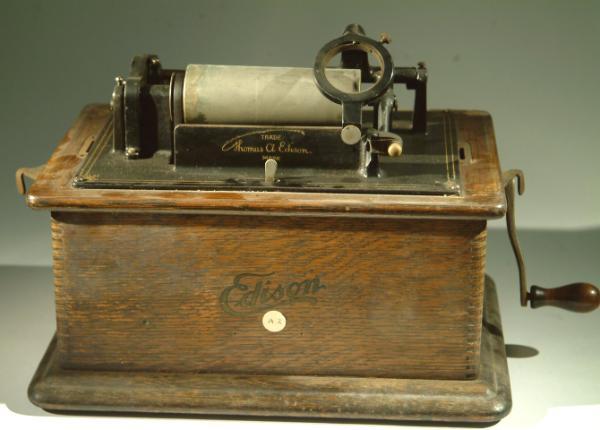
Playing 2 minute cylinders, this piece is missing its original reproducer. Serial No. 634338.
TELEGRAPHY
Crystal Wireless Telegraphy Receiver Model Td No.304
By Gambrell Bros. Ltd, 1916

Used to receive limited distance information wirelessly during the years of the First World War. Crystal receivers are passive receivers and produce weak sound so must be listened to with sensitive earphones.
Crystal and Cats Whisker from Domestic Crystal Receiver
By E. M. Job, 1928

Semi-conducting crystals were used as an inexpensive part of a wireless telegraphy receiver. The cat’s whisker is a thin electronic wire that lightly touches the crystal in the receiver in order to make a rectifier.
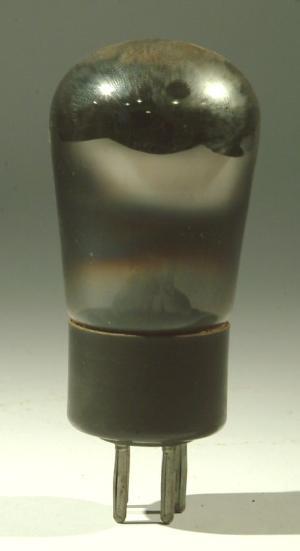 Mullard PM 2 Triode Valve
Mullard PM 2 Triode Valve
An early one-cell triode valve used in wireless telegraph receivers.
One Wave Wireless Receiver
By George Blythe of Meifod for Mrs S. Williams, Meifod, 1926
This receiver, build for Mrs S. Williams of Central Stores Meifod uses a Cossor ‘Wuncel’ audio output triode.
Crystal W/T Receiver, Mark III, No.937
By Robt. W. Paul, 1916
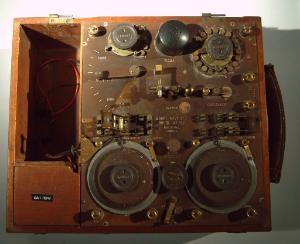
Used to receive limited distance information wirelessly during the years of the First World War. Crystal receivers are passive receivers and produce weak sound so must be listened to with sensitive earphones.
Hertz Coherer Wireless Telegraphy Receiver
Built by W. Shapland, U. C. W. Aberystwyth, 1905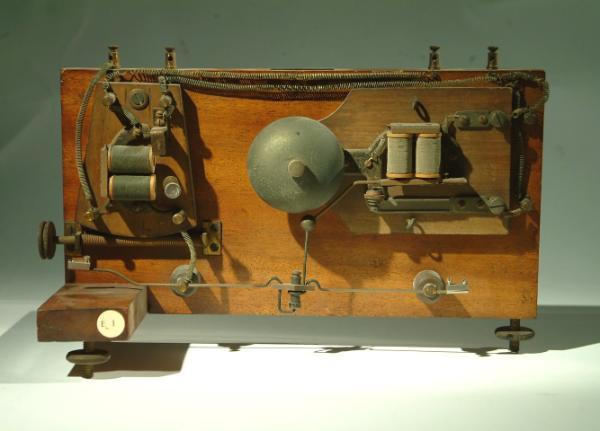
An early wireless radio receiver. Named Coherer due to the metal fillings in the tube ‘cohering’ or sticking together when a radio signal was applied. This allowed for a greater D.C current to flow. A signal closes the coherer, which closes the relay, causing the bell to ring. The projection from the bell clapper shakes the coherer and resets it.
Wireless Telegraphy Coils
-600x308.jpg)
Metal coils used in early wireless telegraphy receivers.
From B. Davies’ collection.
Type B5 Radio Valve
By BTH, 1925
BTH (British Thompson-Houston) Type B5 valve for use in wireless radio receivers.
Telegraph Licences
1923-1929
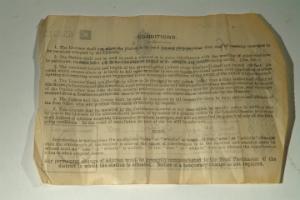
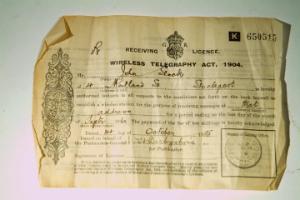
A collection of licences for Mr. John Slack of Stockport “to establish a wireless receiving station.”
Brownie “BBC” No. 2 Model Crystal Radio Set
By Brownie Wireless Co., 1925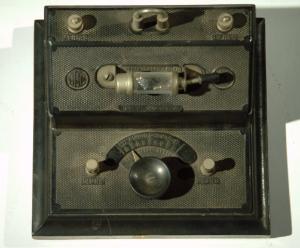
This set is made from moulded ebonite and is one of the first radios to have a plastic housing. Called the BBC because it could be tuned to the BBC’s medium wave transmitters.
Condenser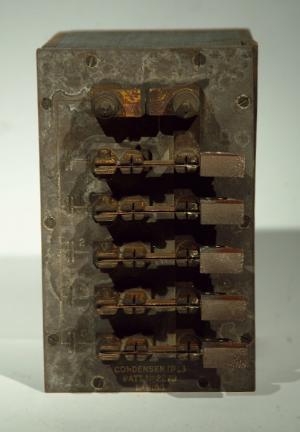
Circa 1905
Variable step condenser likely used in early wireless telegraphy.
Model of Wheatstone and Cooke’s Single Needle Telegraph
Circa 1890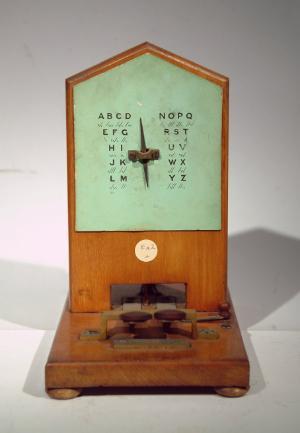
Used on railways up until 1950, this telegraph was an improvement on the multi-needle telegraph. However, the code was more complex and required a longer transmission time.
Purchased from St. David’s College, Lampeter, 1945.
Single Needle Telegraph Variant
Circa 1890
A model of Wheatstone and Cooke’s single needle telegraph, in bad condition.
Two Stage L. F. Amplifier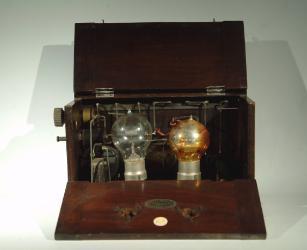
By Wates Bros. Ltd., London, 1924
A two-stage L. F. amplifier for converting 1 or 2 valve receivers into loudspeaker. Valves are not original.
Atlantic Telegraph Cable
Circa 1857
A small piece of the transatlantic telegraph cable, for use with which Thompsons reflecting galvanometer was developed.
Atlantic Telegraph Cable Charm
Circa 1857
A small section of the transatlantic telegraph cable that has been made into a charm with the inscription: ‘Atlantic Telegraph Cable 1857. M. McC. To W. J. R. P.’
Air Ministry VT94 Valve
This triode was designed for use on high frequency receivers of up to 6MHz.
Induction Coil
Circa 1900
A small induction coil of the type used in early wireless telegraphy experiments.
Desk Telephone
By The British L. M. Ericsson Mfg. Co. Ltd., Beeston Notts. 1830
This telephone was in the Professor’s room in the old Physics Department in King St. and was part of the internal telephone system.
Hand Magneto
Circa 1910
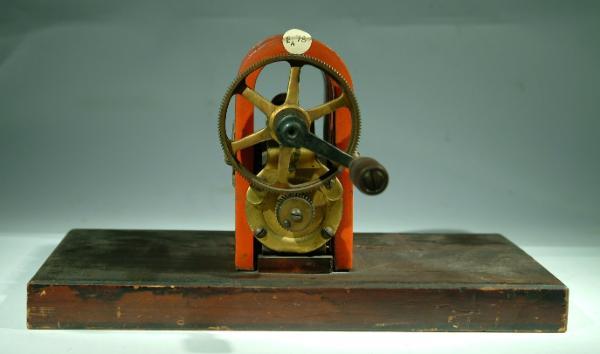
From a telephone, when wound this magneto rang a bell at the other end of the line.
Breguet’s Dial Telegraph Transmitter
Circa 1880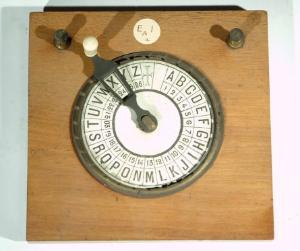
A model of a transmitter for Breguet’s Dial Telegraph.
Purchased from St David’s College, Lampeter, 1945.

